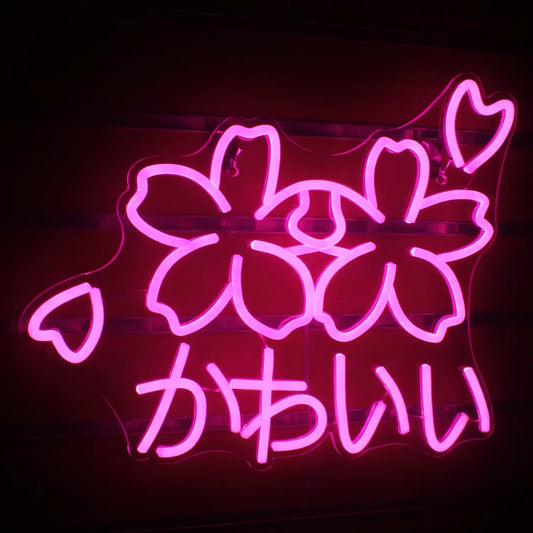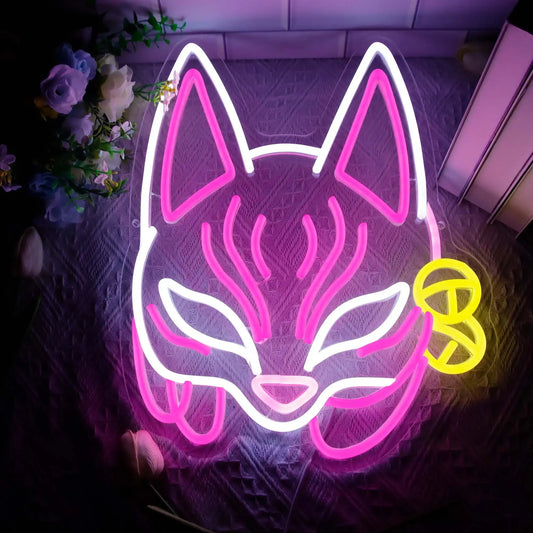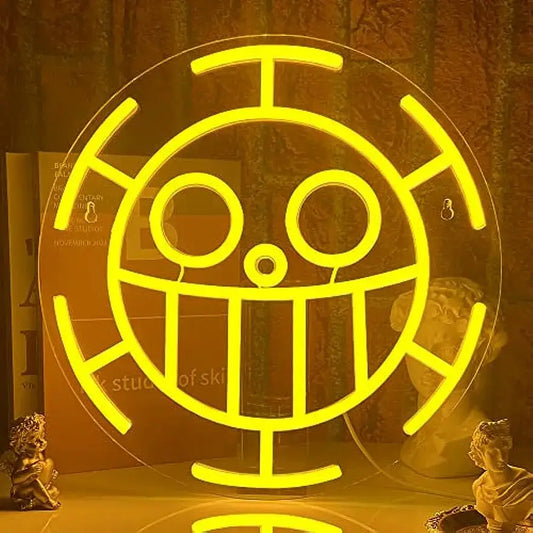Welcome to the Glow: Step into the Electric Soul of Japanese Neon Signs
Vibrant, mysterious, and utterly iconic—Japanese neon signs are more than urban illumination. They are cultural landmarks, cinematic backdrops, and glowing emblems of Japan's unique relationship with design, identity, and night life. From the towering facades of Tokyo's Shinjuku to the back alleys of Osaka's Namba district, neon signs tell stories in light.
Our curated selection of Japanese neon signs captures this essence, offering handcrafted signage for decor enthusiasts, anime fans, collectors, and creators who want to bring a piece of Japan's electric energy into their own spaces. Whether you're decorating a cozy studio, building a themed restaurant, or creating a cyberpunk oasis, these signs deliver an unmatched visual experience.
Dive into the glow. It's not just light — it's emotion, history, and bold design.
Illuminated History: The Origins and Evolution of Japanese Neon Signs
Neon signs were first introduced to Japan in the early 20th century, but they gained cultural prominence in the post-war boom of the 1950s and 60s. Inspired by American cityscapes but crafted with a distinctly Japanese aesthetic, neon became the language of modernity, nightlife, and consumerism.
In Tokyo, cities like Shibuya and Shinjuku became neon meccas, each street an ever-changing canvas of light. By the 1980s, neon was not just an advertising tool—it was art. Combined with kanji, katakana, and creative fonts, Japanese neon signs evolved into visual poetry.
Even as LED has become dominant in recent years, vintage-style neon remains highly sought after, especially among:
-
Retro design lovers
-
Cyberpunk fans
-
Interior designers
-
Photographers
-
Anime and JDM culture enthusiasts
| Era | Neon Trend | Cultural Influence | Common Settings |
|---|---|---|---|
| 1950s-60s | Western mimicry | Economic boom | Bars, arcades |
| 1980s | Neon saturation | Bubble era aesthetics | Music districts |
| 2000s-Present | Retro revival | Pop culture & anime | Cafes, homes, art studios |
Why Japanese Neon Signs Are a Global Obsession
Japanese neon signs are universally adored for their aesthetic, mystery, and cultural punch. But what makes them irresistible?
-
Typography Meets Art: The complex beauty of kanji and katakana characters transforms text into visual sculpture.
-
Instant Atmosphere: Neon light creates mood—dreamy, moody, edgy, nostalgic.
-
Pop Culture Power: Think Akira, Blade Runner, Cyberpunk 2077, and every Tokyo night scene in anime history.
-
Photogenic to the Core: A backdrop of glowing Japanese text adds cinematic flair to selfies, photoshoots, or vlogs.
📷 Each sign is a mood, a message, a memory. Whether you choose one that spells "ramen," "love," or simply glows in kanji for "night," you're tapping into a design language that resonates across generations and cultures.
These signs aren’t just decor—they’re statements.
Lighting the Vibe: How to Style with Japanese Neon Signs
Neon signs aren't just for city streets anymore. Today, they're a go-to decor element for anyone looking to infuse their space with personality and mood.
Home Interiors:
-
Gaming Rooms: Add cyberpunk edge with glowing katakana or hiragana phrases.
-
Bedrooms: Create a romantic or dreamy setting with neon kanji for "love" or "dream."
-
Kitchens or Dining Areas: Signs reading "ramen," "izakaya," or "sake" set the scene for modern food culture.
Commercial Settings:
-
Bars and Cafes: Use custom neon to recreate the intimate vibes of Tokyo's Golden Gai.
-
Retail Shops: Catch the eye and communicate aesthetic instantly.
-
Studios & Salons: Creative and contemporary, neon signs set the tone.
| Setting | Sign Idea | Lighting Impact | Complementary Elements |
| Gaming Den | "Tokyo Nights" (katakana) | Electric, bold | LED strips, metallic wall art |
| Home Bar | "Izakaya" (居酒屋) | Warm, inviting | Wood textures, sake bottles |
| Cafe | "Matcha" (抜茶) | Soft glow | Minimalist counters, hanging plants |
Style Tip: Combine multiple signs or layer them with other Japanese design cues like lanterns, wooden slats, or tatami textures for immersive effect.
Bright Pairings: What Complements a Japanese Neon Aesthetic
Japanese neon signs shine brightest when supported by thoughtful decor and accessory choices. Here are some perfect pairings to consider:
Furniture & Decor:
-
Industrial shelving
-
Low-profile seating or floor cushions
-
Shoji screens or bamboo panel dividers
Wall Art & Accessories:
-
Japanese movie posters (anime, Yakuza films, retro sci-fi)
-
Vinyl record covers with vintage Tokyo cityscape themes
-
Murals or graffiti-style art with kanji motifs
Lighting & Technology:
-
LED floor lighting
-
RGB computer or console setups
-
Ambient projectors
| Pairing Type | Item Example | Vibe Created |
| Poster Art | "Tokyo Drift" scenes | High-speed urban |
| Plant Decor | Bonsai or monstera | Natural balance |
| Furniture | Tatami or zaisu chairs | Modern meets traditional |
These additions frame your neon sign within a story—making your room feel like a cinematic still or a scene from a manga.
More Than Light, It's Lifestyle
Japanese neon signs aren’t just decor—they’re culture in motion. They embody energy, art, nightlife, and nostalgia all at once. Whether you’re a city pop fan, an otaku, a gamer, or just someone who loves design with edge and emotion, these signs are your passport to a different dimension.
They don’t just light your space—they transform it. They don’t just decorate—they narrate. Each glow is a page in a Tokyo night story, a vibe bottled in color and kanji.
So pick your word. Pick your light. Let your space speak fluent neon.
Explore our full collection of handcrafted Japanese neon signs and electrify your aesthetic today.








































































